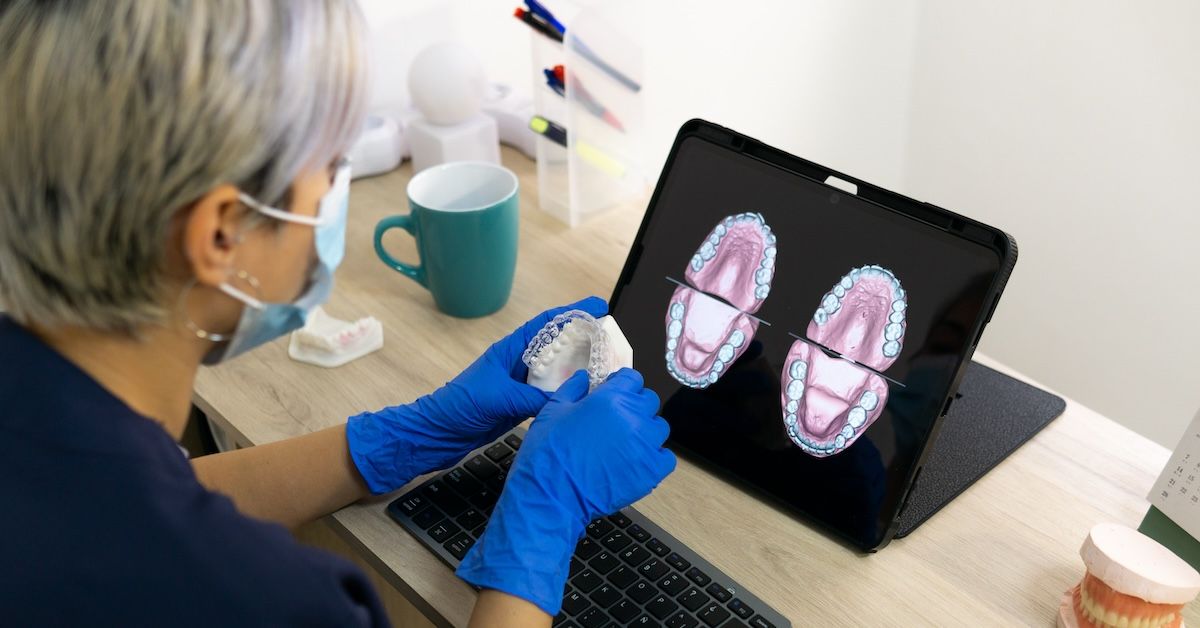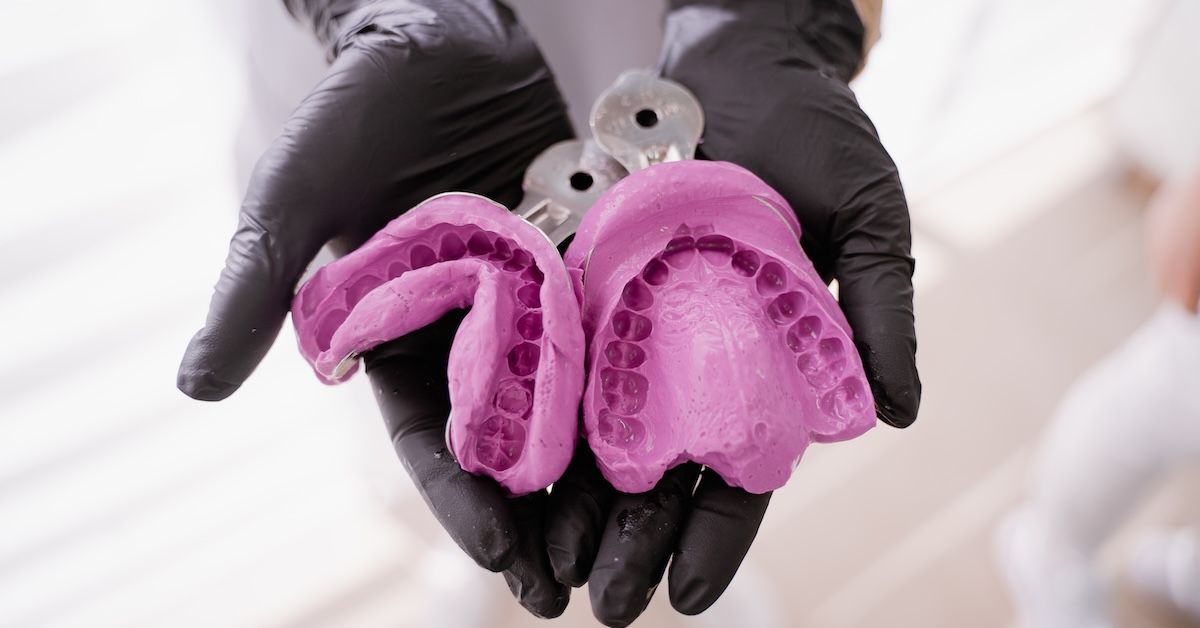DIY aligners and the risks of home dental impressions
Using cheap and easy treatment options to achieve the perfect smile might save time and money on treatment costs, but straightening your teeth with cheap online solutions comes with a lot of risks.
It can be very hard to resist the targeted ads online and our social media feeds showing us how easy it is to alter the position of our teeth.
Our social media channels are flooded with pictures of perfection, and attractive options for fixing crooked teeth without supervision are becoming a popular trend to save on costs.
We get it. Finding quick fixes to correct our teeth and jaw when we're not happy with our smile is tempting! The risks of taking impressions of your teeth without the guidance and assessment of a qualified orthodontist are high.
Get a safe digital impression of your teeth with ImpressDIY aligner impression kits are a product that we see ads becoming increasingly popular for. But the reality of managing your own teeth straightening is very risky. Dental impression kits that allow you to take moulds at home to create aligners are strongly discouraged by professional dentists and orthodontists.
The risks of using DIY home treatment plans without supervision are pretty big, with dental impression kits being one of the home treatment methods that is particularly dangerous.
We’re exploring why they shouldn’t be used, and the best way to manage your aligner treatment instead.
The appeal of at-home aligner impressions
Let’s face it, being able to get something delivered to your home is incredibly convenient. Still, it’s important not to choose affordability and convenience over risk when it comes to straightening your teeth.
The fuss-free approach doesn’t usually include supervision. You also don't have the advantage of pre-treatment assessments or post-delivery check-ups. Once the aligners have been produced from your moulds, it can be hard to seek a professional who can help.
Most dentists would be unlikely to accept your case or you as a patient to avoid any liability for damage that may have already been caused.
The problem with this is that assessment and dental scanning are actually a critical step in aligner treatment to be assessed by a professional who can diagnose any underlying conditions and your suitability for aligners in the first place.
We’re covering the risks of home dental impression kits in this article. We’ll also talk about the benefits that come with professional monitoring during aligner treatment.

Dental impression kits: what are they?
Dental impression kits contain materials such as alginate or silicone, and are typically used by dental professionals to take a detailed mould of your teeth.
Used with little to no involvement from qualified orthodontists, it can lead to an incorrect replica of your dental structure, infection, incorrect and poorly made aligners.
All of these risks can likely lead to incorrect alignment and long-term damage to your teeth, too. The consequences of improper pressure on your teeth can be incredibly dangerous, and lead to exaggerated misalignment, bone loss or temporomandibular issues, and tooth loss.
What can go wrong with DIY aligner impressions?
The list of damaging effects that unsupervised aligner treatment can produce is pretty big, but here are a few of the most common indications:
- Extensive tooth sensitivity
- Tooth and gum damage
- Bone damage
- Enamel damage
- Expensive repairs
- Bad bacteria leading to disease
- Infection from foreign objects in your mouth
- Tooth wear and the need for tooth extractions
Taking moulds incorrectly will not only lead to risk at the time you make them, but can also lead to long-term effects from moulds not being taken accurately.
You might find that you are left with ill-fitting aligners, too loose, too tight, or painful aligners can lead to greater oral health risks.

Professional supervision with aligners
To successfully see a smile you love after your straightening journey, it’s important to find a company that provides you with medical supervision throughout the length of your treatment.
It’s common for patients to need interproximal reduction, for example, in the case of crowded teeth, to create space for tooth movement as they need to rotate during aligner treatment to end up in the correct position.
Here’s a list of what your aligner treatment should include:
- Pre-treatment assessment of history and suitability
- Licensed supervision and creation of aligners
- Regular check-ups and monitoring of your progress
- Access to a qualified medical professional in an emergency
- A diagnosis and explanation of whether your teeth and gums can support orthodontic treatment
- Digital impressions using scans and X-rays to tailor your treatment according to your teeth, upper and lower jaw
Impress offers all of the above when you start aligner treatment with us. You can also feel safe with the knowledge that the price you’re told is transparent–there are no hidden surprises. We also offer a shorter treatment time on average compared to fixed braces
If you’re thinking about corrective aligner treatment, you can find out more about aligner results and the Impress app that makes managing your treatment easier.

Professional dental care: visit an Impress clinic
You can expect a truly personalised approach to your orthodontic treatment and care at Impress. Our GDC-registered dentists are experienced and qualified dental care professionals.
We have clinics in cities right across the country, you can find us in Birmingham, Sheffield, Bristol, Cardiff, Liverpool and Leeds, as well as other central city locations in the UK.
So, what are you waiting for? If you're ready to get started with Impress, you can book your free orthodontic evaluation. You can also give us a call or message our team on WhatsApp to find out more about how we can help you.




